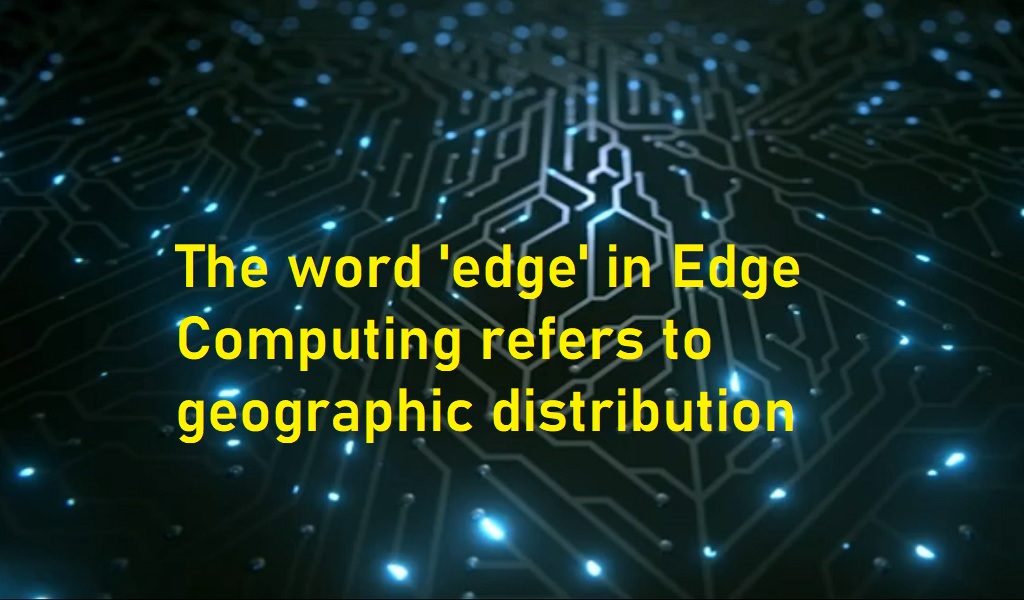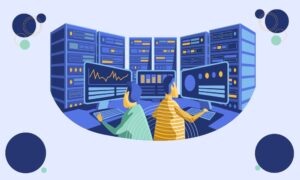Digital transformation of data across the world challenges the Edge Computing towards extensive growth. Whether it is IoT, Wireless 5G, or any other trending technology, the technology has reached a bandwidth and has made its way from robotics straight up to Artificial Intelligence and now even the self-driving cars.
All these devices require real-time process computing, which is solely possible with Edge Computing. The cost of bandwidth is no more an issue while processing. Think about the encryption and the biometric information stored in the devices.
The word ‘edge’ in Edge Computing refers to geographic distribution. Instead of asking the cloud at different data centers to compute all our data, it brings you a bit closer to the data source. According to the recent survey, most companies like Amazon, Google, IBM, etc. are the largest public cloud providers having their new opportunities for the ‘cloud’ lie at the ‘edge’.
Edge Computing is an essential part of the Distributed Computing that processes the information close to the Edge. Here, Edge refers to the nearest available things that are accessible by people. The combination of data storage and computation is taken care of remotely rather than having a centralized location. Hence, real-time data doesn’t have latency or performance issues. It also overcomes the money issues by having the processing done locally in a centralized or cloud.
Edge Computing – Brief Working
If you are familiar with the Content Delivery Network, then leveraging or deploying this Computing topology is not a Herculean task. Basically, in this technology, you will be distributing software and code instead of static assets. Thus, the latency is also reduced, and distributing the assets anywhere across the globe is easier. You can deploy any number of Virtual Machines or Containers to the cloud edge.
The Computing at Edge essentially works on three notable aspects: Internet of Things, Cloud, and Corporate Data Centre. Edge Gateway, for example, is an Edge Computing service that can process data from a device, thereby sharing only the relevant data to the cloud or retrieve data in case of real-time applications.
The edge devices can have IoT sensors, cameras, smartphones, IoT appliances, or even the Edge Gateways as ‘things.’ All these edge devices have Edge Computing infrastructure as their backbones.
Why is it in the Limelight?
Consider a complex algorithm that would require accurate results apart from the quick response. Running such real-time applications over the cloud takes forever since the cloud is responsible for many devices—Edge Computing storms into the limelight at this point. The Computing profitably cuts the cost of deployment and lets the companies enjoy many cloud application privileges.
Though the eye-opener of this limelight Computing technology is its ability to process and store data competently, the critical real-time applications grab the attention of the leading business tycoons. Any complex set of algorithms would smoothly run on the local edge server or the edge gateway.
An ‘AWW!’ tech fact: An interesting fun fact is that Google Scientists have claimed a massive break-through in the cutting Edge Computing technology with ‘Quantum Supremacy.’
Privacy and Security
The issues would seem endless until we attain an ideal state, which is, of course, impossible. Hence solving the existing problems one-by-one increases the efficiency of the system and decreases the latency.
At this point, we might look up to cloud-based computation rather than the edge. But as the number of devices increases, computation speed is likely to drop and may be open to intruders – a potential security issue.
A reliable edge device requires high processing power, electricity, and network connectivity. Therefore, securing the redundancy and failure management for the devices compute the data at the Edge gateway.
Examples of Edge Computing
Video Streaming and Orchestration
A highly optimized video delivery method that distributes video files apart from orchestrating and caching them happens from a compact device. The new video contents can be delivered to the paid customers on their request with a high media processing application. These applications run on the mobile hotspot and edge servers.
Edge in Transport Management
The technology makes the traffic management systems highly intelligent by improvising real-time data. The sensory data are extracted, analyzed, and compressed before sending them to the IoT Edge Gateways for further use.
Smart Vehicles
The complexity of sensor technologies used in autonomous vehicles undoubtedly requires the highest level of preference in Edge Computing. The bandwidth and real-time parallel computing capabilities are also a significant concern for smart vehicles. This topology or technology in Smart vehicles increases processing and safety.
Oil and Gas monitoring
As we all know, the oil industries are located far from the city, mostly in remote locations. Failure or a small spark of miscalculation can ignite a series of disasters. Edge solves high-speed processing and real-time analytics of the data about the plant in this particular use case.
Health monitoring systems
Using a third-party cloud is also insecure since the patients’ data are highly confidential. Edge on a hospital would deal with the data processing locally maintained and also improves notifications and reminders to the respective patients.
Key Takeaways
5G in no time would start taking over the whole world and lends a promising bandwidth provision. In a recent report, 5G would be the catalyst for driving the Edge Computing to its maxim. Real-time processing covers all the mobile applications, self-driving cars, and traffic management systems fueling 5G technologies on Computing strategies.
In the year 2020, the need for on-demand real-time computational applications has played a significant role in this Computing technology. Though the initial goal was to reduce IoT devices’ cost, real-time applicational growth required the local processing and storage capabilities. This technology would help skyrocket this Computing technology over the next few years.
While considering the ‘cloud edge,’ the edge computing has the upper hand in computing resources as nearer as possible to the end-user. Cloud Computing and Edge Computing have an extensive line of differences.
The Edge’s latency is comparatively less than the Cloud computing as the resources are far away from the source. Running the facial algorithms using this Computation is much easier and quicker than that of the Cloud-based Computation.

















